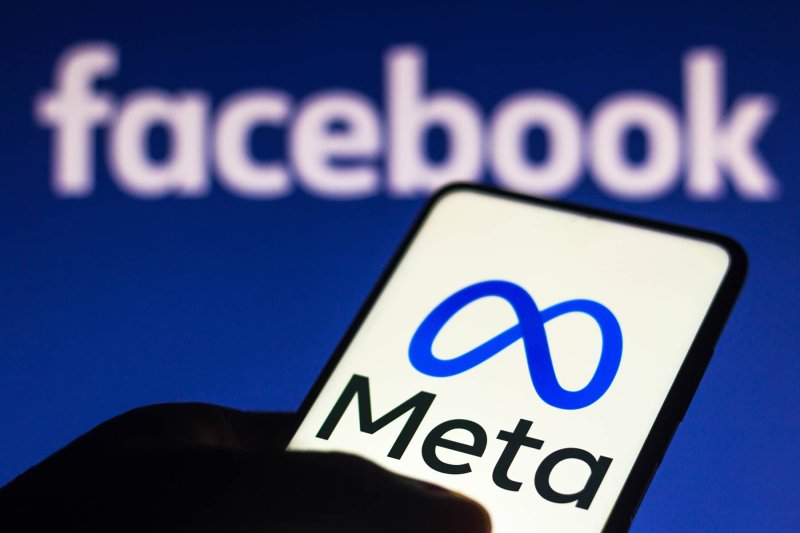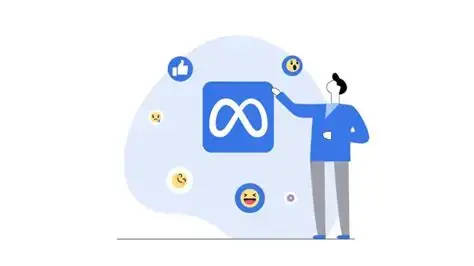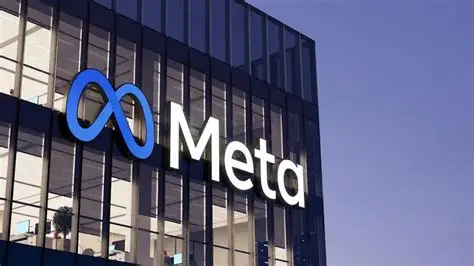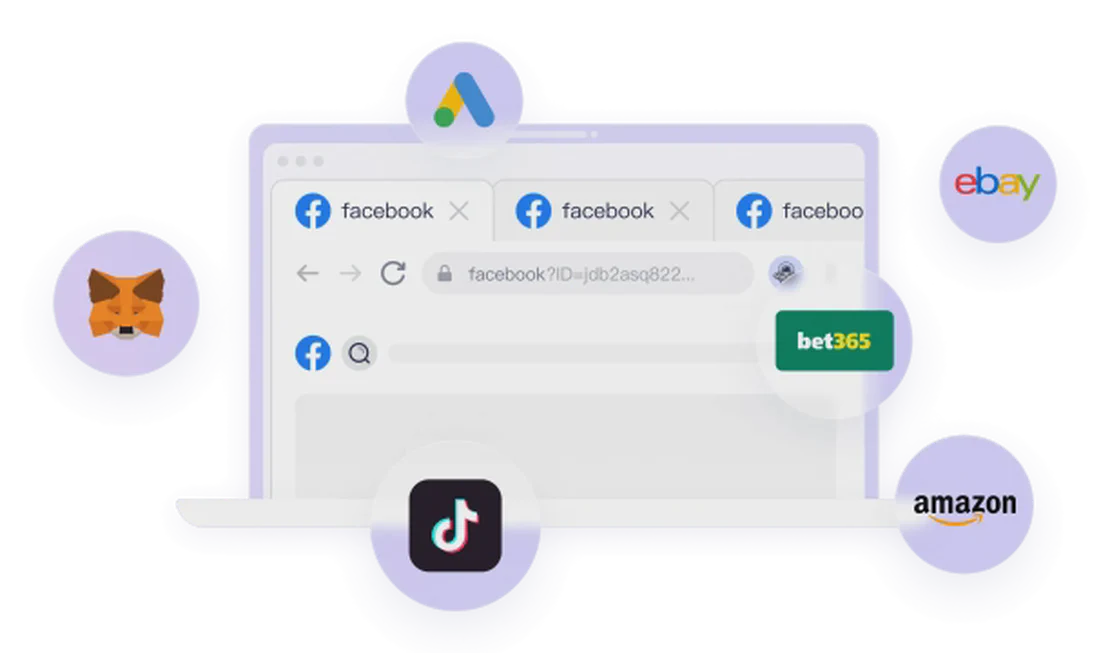Have you ever felt that no matter how you optimize your budgets or tweak your audiences, your recent Facebook ad spend return (ROAS) is being throttled by an invisible force? Your costs keep climbing, while your conversion performance continues to slide. If this has left you feeling confused and anxious, know that you are not alone. The entire digital marketing world is buzzing about a common “villain”: Meta’s Andromeda algorithm update. It is widely regarded as the most dramatic change to Facebook’s advertising system since 2021, mercilessly eliminating advertisers who continue to use old strategies.
This is not just a minor algorithm tweak; it’s a profound reconstruction of the underlying logic. To not only survive but thrive in this new era, we must first pierce the fog and understand the true intent of Andromeda—why it was created, what problems it aims to solve, and most importantly, how we can tame this AI beast.

The Birth of Andromeda: The Paradigm Shift from “Audience Segmentation” to “Individual Addressing”
To understand Andromeda, we must return to Meta’s official blueprint—the white paper released on December 2, 2024. It reveals the core driver behind this update: automation and generative AI. Meta is pushing the entire advertising system into a new era where real-time decisions are powered by artificial intelligence.
Under the old system, the logic for ad delivery was relatively simple, a concept we can call “Audience Segmentation.” The system would segment users into different “buckets” based on their demographics, interest tags, and behavioral paths. Advertisers would then precisely “slot” their ads into the most appropriate audience buckets. While effective, this approach had two major bottlenecks:
- Exploding Volume of Ad Candidates: Today, thousands of advertisers are competing for a user’s attention. For a specific user, who among millions of ads “deserves” that impression? The old system was limited in its efficiency and capability when handling this massive-scale matching.
- Extremely Tight Delivery Windows: A user’s interests and behaviors are dynamic and fleeting. The system must deliver the most relevant ad to the right user within a “here and now” timeframe.
The emergence of Andromeda is to completely solve these two problems. Its core philosophy, as stated in the white paper, is to establish a “new paradigm for personalized ad retrieval.” In simple terms, its goal is to shift from “finding ads for audiences” to “dynamically finding and matching the most relevant ad creative to a unique individual at the perfect moment.”
This is no longer a coarse, broadcast-style system based on segmentation. It’s a fine-grained, real-time, point-to-point “intelligent addressing system.” It uses a highly customized deep neural network to break free from the constraints of isolated models and numerous heuristics of the past. This means Andromeda has unprecedented power to understand the nuanced correlation between ad creatives and user intent.
Why Your Ads Are “Bleeding”: Misunderstanding and Wrongful Responses to the New Algorithm
Knowing the “What” is important, but the “Why” is even more crucial. Once you understand Andromeda’s “individual addressing” logic, you’ll see why many past practices have now become completely ineffective.
In the past, the success of many advertisers relied on meticulous budget control and strict audience restrictions. They would:
- Create numerous, separate Campaigns and Ad Sets.
- Set small daily budgets for each Ad Set to “control risk.”
- Tightly restrict audience size (e.g., “further limit the reach of my ads”), ensuring no ad spend was “wasted” on irrelevant people.
In the old ASC (Ads Manager Classic) system, these tactics may have been logical. But under the dominance of Andromeda, these practices are tantamount to “sailing a new ocean with an old map,” with disastrous consequences:
- Punitive Ad Rank: The core task of the Andromeda algorithm is to have enough “ammunition” and flexibility to systematically test a massive volume of ad creatives and automatically allocate winning ads to the most suitable users. When you slice your campaigns and budgets too finely, you are essentially telling the AI, “Hands off, I’ll handle it myself.” This prevents the algorithm from effectively learning and allocating resources across Ad Sets, leading to lower ad weights.
- Spiraling Costs (CPC/CPM): The direct result of a low ad rank is that you have to pay a higher price for every click or impression to get the same reach. Your budget is being spent on “bidding thresholds” rather than “conversions.”
- Stifling Creative Diversity: Andromeda needs a “tsunami of creatives.” It can only leverage its powerful matching capabilities to find that “viral” ad that truly resonates with a specific user if it has a large, diverse pool of assets (videos, images, copy) to test from. Your budget restrictions directly limit the scale of this testing, rendering the AI powerless.
In short, if you are still using a “budget control” and “audience restriction” mindset to manage your Facebook ads, you are not just fighting the algorithm; you are actively choking the growth potential of your campaigns.

Adapting to Andromeda: Building a New Ad Architecture That “Gives Everything a Shot”
Since the old path is dead, why not forge a new one? The challenge of adapting to Andromeda requires not minor fixes, but a structural revolution centered on two core concepts: creative diversity and system flexibility.
One Core Concept: Giving Everything a “Chance to Be Seen”
This is the cornerstone of all strategies. You must trust the intelligence of Andromeda and give it enough space. Specifically:
- Embrace CBO (Campaign Budget Optimization): In your new Prospecting campaigns, use CBO decisively. CBO is more than just a budgeting tool; it’s a “vote of confidence” that hands decision-making power completely over to Andromeda. It tells the algorithm: “All Ad Sets within this campaign share one total budget. Please decide for yourself, based on real-time performance, how to spend this money where it works best.”
- Break Down Budget Barriers: Abandon budget restrictions on individual Ad Sets or Ads. The only control you need is the total budget for your entire Prospecting campaign. This frees the algorithm from the shackles of “how much small change do we have to spend” and allows it to roam freely toward the goal of “how many new customers can we find today.”
Two Mechanisms: Prospecting, Retargeting, and Creative Bundling
Under the core principle of “giving everything a shot,” we need clear mechanisms for effective management.
Mechanism 1: Separate Prospecting from Retargeting While Andromeda affects all campaigns, its primary value is realized in “Prospecting”—acquiring new customers. Therefore, maintain a clear division of labor in your account structure:
- Prospecting Campaign: This is Andromeda’s main battleground. You will use a CBO structure and deploy your most extensive and diverse test ad bundles here.
- Retargeting Campaign: This is your stabilizer for retaining existing customers and increasing LTV (Lifetime Value). The audience targeting here is highly specific, and you (and should) still enforce budget control because the goal isn’t “testing” but “converting.” The decision-making weight of Andromeda is relatively lower here.
Mechanism 2: Build “Creative Bundles” and Organize Them How do you stay organized amidst a sea of ads? The key is “bundling” and “dating”:
- Create Ad Sets by Date (Bundling): Don’t mix today’s creative assets with next week’s. Whenever you have a new batch of creative ready, create a new Ad Set named by date (e.g.,
2024-10-26BroadPack 01). The benefits of this are:- Precise Control: When a “creative bundle” underperforms, you can easily “pause” the entire bundle without affecting the other testing bundles, preserving the purity of your data comparison.
- Limiting the Learning Phase: This is critically important! A newly created Ad Set enters a “learning phase.” By frequently creating new bundles, you can effectively prevent any single Ad Set from being stuck in a perpetual learning phase, enabling faster iteration and optimization.
The essence of this architecture is shifting from a “micro-control” system to a “macro-navigation, micro-empowerment” system. You are no longer the “budget steward” but the “strategic captain,” responsible for setting the course (prospecting goals), and then handing the helm over to the AI to navigate automatically (CBO and Andromeda).
“Account Health Management” in the Era of Algorithm Upgrades: Why You Need FlashID
When you rebuild your core Facebook ad architecture and begin to run multiple large-scale Prospecting campaigns alongside retargeting activities for different businesses, a new, equally fatal challenge emerges: account security and identity isolation.
Imagine your ad account structure might include:
- Prospecting Campaign for Brand A: Promoting a new clothing line.
- Prospecting Campaign for Brand B: Promoting fitness equipment.
- Affiliate Marketing Project: Promoting products for multiple merchants.
- Client’s Ad Management Account: Providing ad services for a specific client.
If all of these activities are conducted through the same browser environment and the same IP address, their “fingerprints” in the backend will be highly correlated. This can trigger a series of serious problems:
- Account Association Risk: This is one of Facebook/Ads Manager’s most severe risk controls. Once the system determines a link between your accounts (e.g., shared login info, payment methods, or even similar operational habits), you will face a series of penalties, ranging from traffic restrictions and ad delivery limits to the permanent banning of all associated accounts. For advertisers who rely on multi-account strategies to combat ad fatigue and test different markets, this is nothing short of “catastrophic.”
- “Account Fatigue”: Even without a direct ban, running too many different campaigns or using similar creatives within a single account can cause the overall weight of that account to decrease. Meta’s algorithm may deem “this account is a bit strange,” leading to a subtle suppression of bids and impressions for all ad groups under it.
- Operational Chaos and Inefficiency: Managing multiple large-scale campaigns simultaneously requires a high degree of organization. You need to frequently switch between different ad accounts to view data, adjust budgets, and launch/pause ads. If all of this happens in one environment, it’s easy to make a mistake that affects the wrong campaign’s budget or confuses critical data.
FlashID Anti-Detection Browser has become an “essential tool” rather than just an “accessory” for digital marketing professionals against the backdrop of such dramatic algorithmic changes. It’s not just about avoiding bans; it’s about building a healthy, sustainable, and scalable advertising business architecture.
With FlashID, you can create a completely isolated digital identity for each independent business, each client’s account, and even each large-scale advertising test series. Each FlashID environment has its own independent IP address, browser fingerprint, cookies, and digital credentials. It’s like opening different offices and bank accounts for different businesses in the real world.
- Brand Isolation: All operations for Brand A are in one “office,” and Brand B’s are in another. Even if one account is penalized or subjected to strict scrutiny by the algorithm, it won’t spread like a plague to your other core businesses.
- Client Management: When providing services for different clients, you can create a separate, viewable FlashID environment for each client. This ensures clear and distinct responsibility, preventing client disputes caused by operational errors.
- Safe Testing: When you want to boldly test a brand-new, unproven ad creative or audience strategy, you can first conduct the test in a “clean” FlashID environment. Only after success will you replicate it to your main account, greatly reducing the cost of trial and error.
In the new world brought by Andromeda, the core of advertising strategy has shifted from “budget control” to “creative scale” and “trust architecture.” An unstable, highly correlated advertising account environment will become your biggest obstacle to implementing new strategies. FlashID, in turn, is the infrastructure that ensures your new architecture can run smoothly and securely. It allows you to embrace Facebook’s changes without hesitation, focusing all your energy on creative production and data insights, thereby truly realizing the growth dividend brought about by algorithm upgrades.

Frequently Asked Questions (FAQ)
Q: Which types of ad accounts is the Meta Andromeda update primarily targeting?
A: All ad accounts. Any account with “Advantage+” campaigns enabled (like Advantage+ Audience, Advantage+ Catalog) has, in fact, been running on the Andromeda algorithm. Moreover, manually created campaigns have mostly been forcibly migrated to the algorithm recently. In other words, the vast majority of ad accounts are now under its influence.
Q: Besides declining ad performance, what are other signs my account is affected by Andromeda?
A: Besides a lower ROAS, you might observe: CPC (Cost Per Click) and CPM (Cost Per Mille) rising for no apparent reason; difficulty for campaigns to “graduate” (i.e., move from the learning phase to stable delivery); lower impressions and audience reach than expected even with precise targeting; and the “further limit the reach of my ads” option becoming significantly less effective.
Q:Why does the author repeatedly emphasize “creative diversity” and “bundling/ uploading in large volumes”?
A: Because Andromeda’s core capability is matching the right creative to the right individual. It needs a massive “creative library” as a data source for its deep neural network to learn from and match, ultimately finding the optimal combination. A small-scale, fine-tuned upload method cannot provide enough data volume, leaving the AI “powerless.”
Q: Does “giving up budget control” mean not setting any budget at all? Completely letting go?
A: No. You are giving up micro-control (budget restrictions on individual Ad Sets) but must maintain macro-control (setting and managing the total budget for the entire Prospecting campaign). Also, “letting go” doesn’t mean “abandoning.” You still need to closely monitor data, evaluate, pause, and optimize at the “creative bundle” level. It’s just that the granularity of optimization shifts from “tinkering” to “strategy.”
Q: Can I put all my assets into a single Ad Set?
A: Strongly not recommended. Placing all assets into one oversized Ad Set places immense learning pressure on it, potentially causing it to remain in a long, high-consumption, low-efficiency “learning phase,” dragging down the performance of the entire campaign. Bundling by date gives each new bundle a “clean” start.
Q: Is the “graduation” process still applicable? Why is moving it to a separate “Scale” campaign recommended?
A: The “graduation” process—extracting the best-performing ads from Prospecting for fine-tuned deployment—is still relevant and more important than ever. Placing it in a separate “Scale” campaign (also with CBO) is to provide it with an “all-honors-students” environment, allowing the algorithm to allocate the budget without hesitation to these already-proven superstar ads, achieving profitable scaling.
Q: Why use an “Interest Ad Set”? Isn’t that a relic of the old era?
A: In the Andromeda system, the role of the Interest Ad Set has changed. It’s no longer a tool for “restricting the audience” but for “expanding success.” Its purpose is to allow a top-performing ad, already proven through a Broad Pack, to “collide” with broader interest groups, thereby discovering new, potentially high-converting user segments and achieving horizontal market expansion.
Q: I’m just starting out with ads and have a small budget. Can I ignore the “graduation” and “Scale” campaigns?
A: Yes. If your monthly ad spend is less than $10,000, your primary goal is rapid testing and validation, not scaling. At this point, you can fully focus on optimizing the various Creative Packs within your Prospecting campaign to find creatives that can deliver a positive ROI. Entering the “graduation” and “Scale” phase too early could lead to wrong decisions due to insufficient data volume.
Q: Besides FlashID, are there any other risk points to be aware of when switching between multiple accounts?
A: IP address, payment methods, device fingerprints, etc., are all key points for association. Ensure sufficient time intervals and use different network environments when switching between accounts. FlashID’s core function is to manage and isolate these crucial digital identity fingerprints, but users must still develop good operational habits.
Q: Besides Facebook Ads, what other advertising platforms can FlashID be used for?
A: The principle of FlashID applies to any advertising platform that relies on user profiles and algorithms for delivery. For example, when conducting extensive tests in TikTok Ads Manager, managing multiple Search and Shopping Campaigns simultaneously in Google Ads, or establishing independent operational environments for different brands or product lines on Amazon PPC, FlashID plays a vital role in account isolation and risk mitigation.
You May Also Like
